Text
El Raval Excursion: Blog Post 3
1. Describe the Spaces for Public use in Raval Area. People, public spaces, stores and private areas. Take 4 photos representing three examples of culture: museums, open skate board areas, universities, cultural centers…

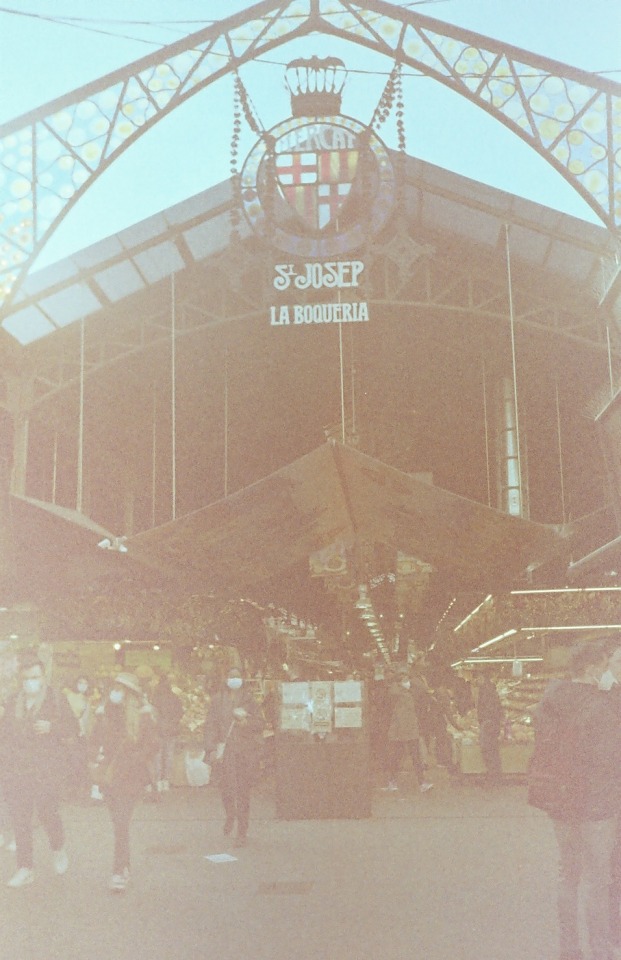

Raval is an up and coming neighborhood, and because of this the people who frequent the public spaces in this area are of a younger demographic. The main park area with hundreds of pigeons that we started the tour on was known in the past as a spot where drug deals occur, but the crime in this area has since been slowed down. This is a very open spot where people eat their lunch, bring their kids to play, or just relax on one of the many benches and seats. The shops in the Raval exemplify this up and coming younger culture and demographic. There are predominantly trendy clothing stores, but also there are newer restaurants, tattoo parlors, smoking supply stores, and even the CCCB, a contemporary exhibition center. In this area where CCCB lies, there is a square in the middle with a stage where musical performances often occur. In addition to this, behind the CCCB, there is an area where many skaters hang out and practice their skills. One of the most famous markets in Europe, La Boqueria sits in the Raval as well.
2. Where is Raval placed in the City Map? Describe the area. The most expensive area of the core of Barcelona for public use. Show a map of this area.
El Raval is very central to the city of Barcelona, only walking distance from areas such as the Gothic Quarter and Eixample. Las Ramblas runs alongside one of the sides of El Raval. In the south of this neighborhood, there are remnants of the medieval city, with a wall and gate that stood where the old limits of the city were taken down. Raval also has a section that is on the water, where the old harbor of the Port of Barcelona lies.

3. Make a list of public buildings and explain its uses. What kind of people are the target of these buildings? Do you think this area was planned for youth? Take 3 photos of public buildings and explain them.
Three public buildings in the Raval are the CCCB museum, the MACBA museum, and the Casa dels Infants. The CCCB museum, like I mentioned earlier is a center of contemporary culture; here films, concerts, exhibitions, and other modern forms of culture representation are shown. The MACBA is a museum of modern contemporary art. Both of these are planned for youth, as the CCCB hosts many events that young people would go to, and the MACBA features new art that the younger generation can better identify with. The Casa dels Infants is the center of an educational project that works to improve the education of children in the area. This project, run by volunteers, works to help kids learn about their opportunities and how to pursue them, while also giving them a safe place to be, food, school reinforcement, and motivation to succeed.



4. What signs can you see in this neighborhood that explain its nature (stores, bars, public buildings, street art, etc…). Take photos of 5 examples that justify your answer and show symbols of alternative culture in the area.
Raval is clearly a bustling neighborhood, awake at nearly all hours, and clearly it is on the rise as a younger neighborhood as well. The stores and shops have a focus on catering to younger individuals. There are a good amount of clothing stores that are not Zara, Pull and Bear, or Mango; it is quite an alternative area. Graffiti is a massive part of the personality of the Raval, as it covers nearly every inch of some of the streets. This shows not only the personality of the neighborhood, but of the young people that are making this street art. The rebellious nature of this art is something that is written in the DNA of the Raval, and once again this is an indication of the young nature of this area.

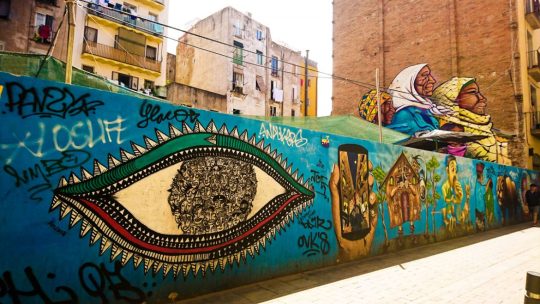
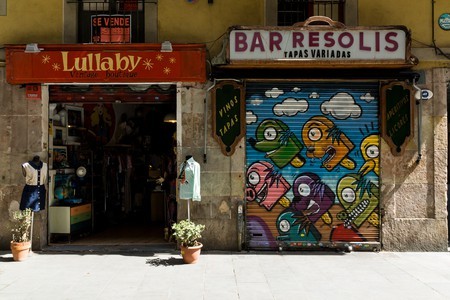
**This is the max amount of images that tumblr would allow, because apparently there is a 10 picture limit.
5. Conclusions: Why do you think the area of Raval district of Barcelona has become one of the centers of alternative culture in Europe during that period? Why do you think this space have determined people’s actions?
The Raval district has become a center of alternative culture in Europe because it is young and gritty and unapologetic about what it is. The streets are covered in graffiti, which makes these same streets colorful and interesting. The area has also become a center for newer, contemporary art and culture due to the popularity of the CCCB and MACBA. Young people run this neighborhood, and because it is so open and public, they fill the streets and squares. The Raval is diverse and young, and due to this public nature of this area, it becomes home to the alternative.
0 notes
Text
Blog Post #2 La Ribera Quarter
Five Barcelonan streets dedicated to craftsmanship or trades:
Carrer dels Corders: This narrow alley was dedicated to ropers, or ropemakers. These craftsman would make ropes that could be used in day-to-day life, but they were also responsible for crafting nooses that would oftentimes be used in executions.
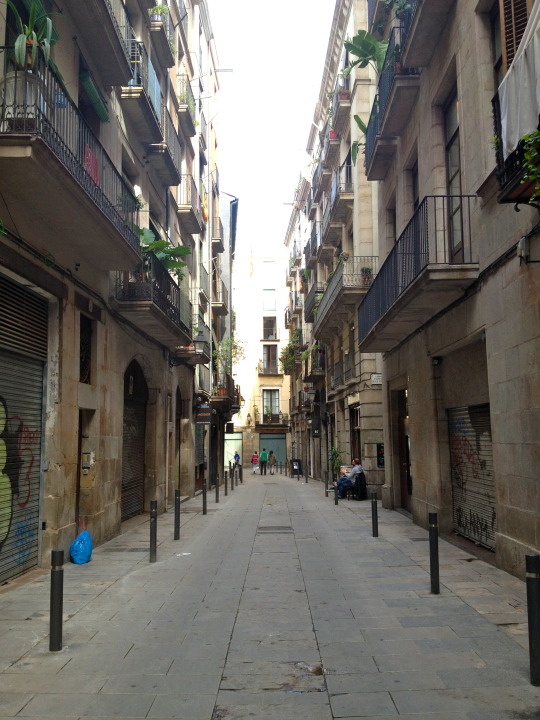
Carrer de Sant Pere: This street was known for its toolmakers. These metalworkers made all sorts of tools for the people of Barcelona, from hammers to hooks.
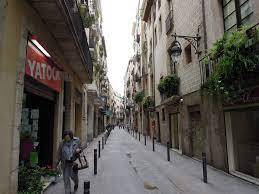
Carrer de Les Candeles: As the name suggests, this street was occupied by the city's candlemakers. Experts in wax, these candlemakers supplied the people with the light sources they needed, as well as candles for various services or holidays.

Carrer de Banys Vells: Literally translating to "old baths," Carrer de Banys Vells was a street for public baths. Here, the citizens of the city would gather and bathe communally, which was very common in that time period. People would come here to wash their bodies and their clothes.

Plaça de La Llana: Plaça de La Llana is where all the wool in Barcelona was made and where prices were negotiated. This area was filled with all of the woolmakers in Barcelona.
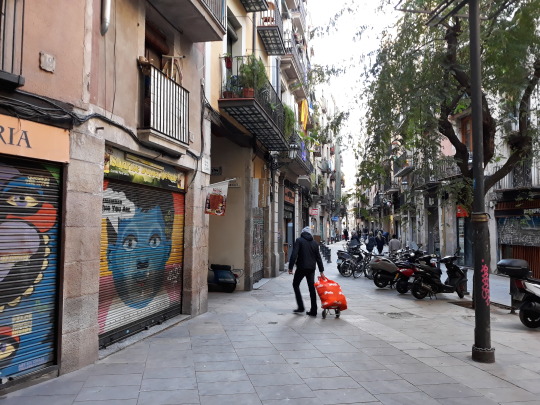
The "Els Gremis" were guilds / groups of artisans and craftsmen who specialized in one specific craft or good. They were basically the first worker's union in Barcelona, and they worked together to set the prices of their services or goods. These close-knit groups often lived nearby each other and functioned as a family, making sure that they all got fair prices for their business.
La Casa-Taller
La Casa Taller basically was a house-workshop hybrid that was. very often employed during this time period. The first floor of the house was usually very open and was used primarily for the actual craft that the artisans or craftsmen were working on. Here they would display their work, and anybody passing through would be able to see the goods for sale. As you go up in floors, the house would get narrower, and the owner of the shop would live upstairs. As the building goes up in floors, the poorer the individuals would be living in that space, just like Roman style architecture.
Main Architectural Aspects of La Ribera
The Casa-Tallers were meant to last a long time, so the merchants and artisans would build these homes with stone and wood because of how durable they would turn out. However, stone and wood were very expensive, so not all buildings could be built from these materials. For example, the industrial buildings in the area, which focused on more mass production of goods rather than careful hand-crafting, used much less expensive material and thus lasted for shorter amounts of time. The roads in this area were very narrow and mostly paved with river stones, which I found interesting because of how bad the conditions are for modern-day transportation.
Cultural Significance of Points of Interest in La Ribera
Santa María del Mar: Santa Maria del Mar is a church constructed in the Gothic architecture style, and it was built by the merchant class of Barcelona so that they could have a place to worship. The emphasis of this church was not on flaunting wealth; it is quite minimal and unlike many other churches in the area, is not covered in gaudy decorations or gold. This church shows the importance of religion to Catalan culture while maintaining the humble approach that Barcelonan culture encourages.

El Mercat del Born: El Mercat del Born, as the name suggests, was a big open market meant for trading of goods, and it was also heavily used by merchants and artisans. It remains one of the biggest and most important markets in Barcelona, and it is an indication of what Barcelona was like when it was created. The use of iron framing and detailing points to the fact that this market was made during the industrialization period in Barcelona, and it shows the value of trade and commercial work in Catalonia and the rest of Spain.
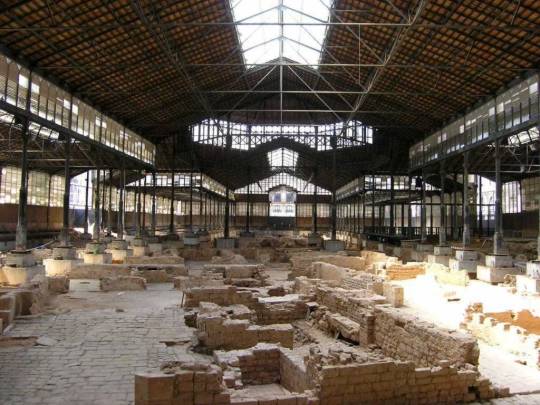
El Fossá de les Moreres: This plaza, which was built over a cemetery with Spanish war heroes, is a public space used as a memorial for these aforementioned Catalan soldiers. There is a monument that is meant to represent the fallen soldiers in the middle of the big square space.

La Ciutadella Park: La Ciutadella Park, established in the mid-19th century, is a historical garden. Found in the north of Barcelona, this area is where King Philip V erected a citadel, or fortress to protect from invaders during the Spanish War of Succession. It used to be one of the only places in Barcelona with grass and trees, but today it is home to museums, the Parliament of Barcelona, and even the Barcelona zoo.

Changes to Catalan society after September 11, 1714
September 11th, 1714 was a day of defeat for Catalonia, but it is known as the national day of Catalan culture. On this day, the Catalan people fell to King Philip V's siege of Barcelona. It is more of a day of remembrance than a day of celebration or a holiday, and it is meant to honor those who fell protecting the city and region. It signifies the great pride that Catalan people have in their culture and their land, and while it was struck down during the Franco regime, the holiday was reinstated in 1980.

El Consolat del Mar
El Consolat del Mar, or "The Customs of the Sea" was a judicial board which was started in Barcelona, but spread throughout the rest of the Mediterranean. This organization was created between the 14th and 15th centuries and it was heavily influenced by the merchants and tradesmen of the land. It was meant to regulate the prices and sales of goods coming from the sea outside of Barcelona, protecting its local artisans and tradesmen by ensuring that local businesses could not be destroyed by these outsiders. Today, the customs are a commercial court system - an official trade organization - that allows merchants to fix issues / resolve problems without involving the actual legal system, and it ensures that trade is regulated in Barcelona.
1 note
·
View note